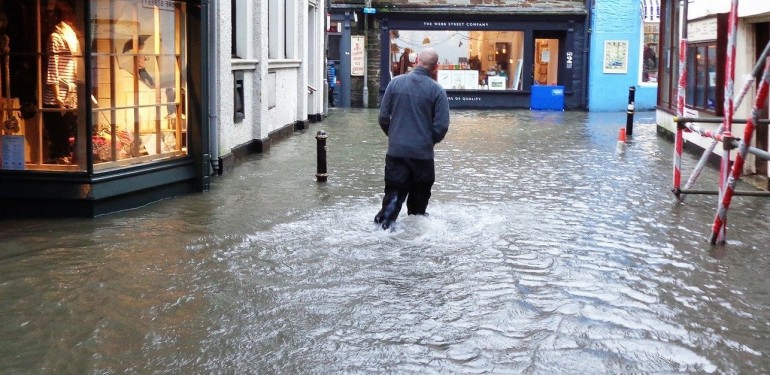
Flood Prevention: 5 Tips for Your Property
Flood prevention is at the top of lots of property managers’ priority lists these days. The Environment Agency estimate that over 5.5 million properties are at risk of flooding in England and Wales. Obviously, if you live in a high-risk area, there may be a limit to the impact flood prevention measures can have. But even buildings outside flood zones can still experience property damage when water levels rise.
As storms Ciara and Dennis have demonstrated, a huge amount of rainfall over a short period can overwhelm even the best drainage systems. While it may not be possible to completely flood-proof your property, there are a few things you can do to help limit flood water damage.
- Pay attention to your gutters
Helping water run away from your property is key. So, do everything you can to encourage effective runoff to an area where the water can drain away easily. Keep your guttering clear of debris and make sure any drains beneath the downspouts are also unclogged, especially if they’re on a paved surface. Also, check whether your gutters and downpipes are big enough to cope with the flow of water. If not, you might need to replace them. Proper pitching is important to enable water to flow freely rather than pooling. And if the gutter system isn’t taking water far enough away from the foundations of your property, you might want to think about extending it.
- Keep your drains clear
Even a small blockage in a drain could lead to extra trouble if the water level suddenly increases. Drains on your property are usually your responsibility rather than that of the local water authority. So, ensure you have a regular surface and foul water drain maintenance plan in place all year round. With our wild weather patterns, you just never know when it will rain hard enough to result in a flood.
- Install non return valves
The toilet is the place where most backed-up flood water will overflow into your property but the whole drainage system is vulnerable. That’s where non-return valves come in handy. Fitted to water inlet and outlet pipes and drains, these devices help stop the backflow of effluent and water during flooding. So, if you haven’t already got them, it might be time to get some installed.
- Make exterior surfaces more porous
While it can still get water-logged, soil is far more absorbent than concrete. Having completely paved areas around your property can prevent surface water from draining away easily. If you can, try to incorporate more natural, porous surfaces in the building’s exterior. If not, make sure the drainage already in place is effective enough to stop water pooling or flowing back towards the foundations.
- Seal up gaps
It’s amazing how much water can get through even the smallest gap. Check your property for any obvious entry points and take measures to seal the gaps. Common weak spots are doors, air brick vents, untreated masonry, cracks in walls, gaps between floors and walls and inlets for internal/external wiring and pipes. Installing flood doors, filling cracks, fitting air brick covers and sealing around inlets can all help keep your property as watertight as possible.
The plumbing and drainage experts – helping you with flood prevention and repair
While most flood prevention measures can’t stop water damage entirely, they can at least reduce the severity and help minimise loss. Whether your commercial property needs some work to keep flood waters at bay for the future or you need help to repair flood damage, we can help. As well as providing scheduled maintenance for your plumbing and drainage systems, our team are always ready to be called out in an emergency. Just get in touch with the Groom Property Helpdesk team for more information.
For further information on flood prevention, read the Environment Agency’s advice leaflet on preparing your property for floods. You can also sign up for Environment Agency Flood Warnings.